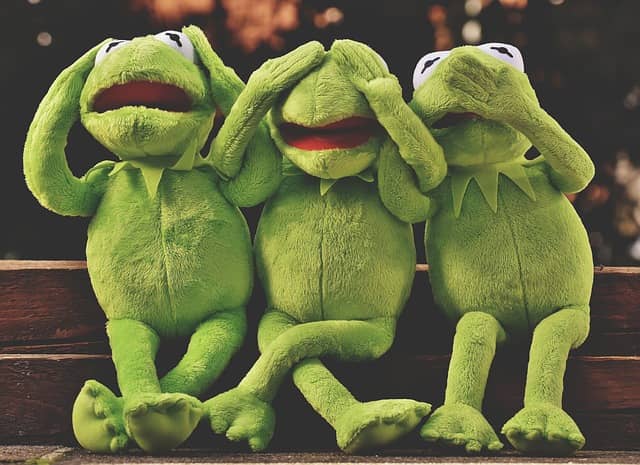What is the problem of evil in Lord of the Flies? William Golding’s classic novel is a thought-provoking tale about the inherent darkness in the human psyche. This gripping story explores the nature of man and his essential being, shedding light on the disturbing reality of the evil that lurks within us all. The book challenges readers to look within themselves and confront the evil inside them. In this article, we will delve into the problem of evil in Lord of the Flies and examine how Golding presents this universal and timeless issue. We will explore the key themes and motifs throughout the novel and analyze how the actions and behaviors of the characters shed light on the fundamental question of human nature. By examining the problem of evil in Lord of the Flies, we can better understand ourselves and the world around us.
What is the problem of evil in Lord of the Flies? (Complete Answer)
William Golding’s Lord of the Flies is a powerful exploration of the problem of evil in humanity. So what is the problem of evil in Lord of the Flies? The novel is a haunting depiction of the inherent darkness in the human psyche, and it challenges readers to confront the unsettling reality of evil within us all.
At its core, Lord of the Flies is a study of human nature. The story follows a group of young boys stranded on a deserted island. As they struggle to survive, they gradually succumb to their primal instincts. The boys, who were initially well-behaved and civilized, exhibit cruel and violent behavior as they gradually give in to their innermost desires.
Golding presents the problem of evil in Lord of the Flies through various literary techniques, including symbolism, allegory, and character development. The most notable symbol in the book is the Lord of the Flies itself, which is a pig’s head placed on a stake. It is given as an offering to the imagined “beast” the boys believe haunts the island. The Lord of the Flies represents the darkness and corruption within the boys, and its presence serves as a reminder of the evil they are capable of.
Another significant aspect of the problem of evil in Lord of the Flies is the characters themselves. Golding masterfully develops each of the boys, highlighting their flaws and weaknesses. As the novel progresses, we see the boys’ personalities shift and witness their descent into savagery. The character of Jack, in particular, serves as a vivid representation of the problem of evil. Initially, Jack is a charismatic and confident boy who is eager to take charge of the group. However, as he becomes more power-hungry and ruthless, he transforms into a savage leader willing to do whatever it takes to maintain his control.
How is the theme of evil shown in Lord of the Flies?
The theme of evil in Lord of the Flies is demonstrated through the portrayal of the boys’ innate tendency towards darkness. William Golding’s novel illustrates how the boys’ society slowly descends into savagery and violence, suggesting a fundamental inclination towards evil in human nature. The beast and the sow’s head on the stake serve as powerful symbols of this theme. The boys’ fear of the beast represents their terror of the unknown, and their natural tendency towards violence is represented by the hunting practice of the sow’s head on the stake. The evil present within their own human nature is what ultimately leads to their downfall, as they succumb to their darker impulses and become increasingly barbaric. Golding’s novel makes a clear statement about humanity’s potential for evil and how it can be unleashed in the absence of societal constraints.
How is good vs evil a theme in Lord of the Flies?
The theme of good vs. evil is prominently depicted in Lord of the Flies through the contrasting characters of Ralph and Jack. Ralph symbolizes the forces of good or righteousness, while Jack represents the forces of evilness. Throughout the book, Ralph tries to establish order, encourage teamwork, and prioritize survival above all else. Meanwhile, Jack tries to gain power through force, rules with an iron fist, and indulges in his primitive desires, leading to chaos and destruction on the island.
Their opposing views on leadership, morality, and survival highlight the struggle between good and evil in the novel. The conflict between Ralph and Jack and their respective followers shows the range of behavior and values humans exhibit when placed in extreme situations. Ultimately, the battle between good and evil ends catastrophically, leading to the downfall of civilization on the island. The novel offers a powerful commentary on the human tendency towards violence and savagery and serves as a warning against the danger of succumbing to our dark impulses.
Is Jack evil in Lord of the Flies?
Yes, Jack can be considered evil in Lord of the Flies. Throughout the novel, Jack displays manipulative and violent behavior, ultimately leading to him becoming a brutal dictator. As the story progresses, his actions become increasingly savage, including ordering the torture of other boys and attempting to murder Ralph. Jack’s motivations appear to be driven by personal gain and control, and his negative traits only worsen as the story unfolds, making him an unlikeable and ultimately evil character.
Conclusion
Ultimately, the problem of evil in Lord of the Flies is a profoundly philosophical and existential issue. Golding uses the novel to explore the complexities of human nature and the darkness within us all. The book serves as a cautionary tale, reminding us of the destructive consequences of giving in to our most base and primal instincts. By confronting the problem of evil in “Lord of the Flies,” we are compelled to reflect on our own innermost thoughts and behaviors. Through this reflection, we are challenged to strive toward a more civilized and compassionate society.
